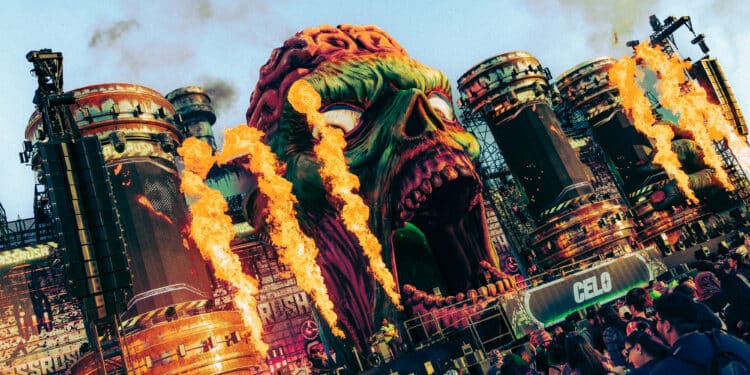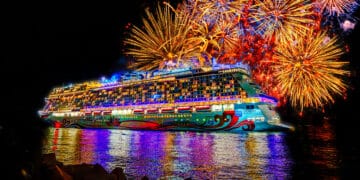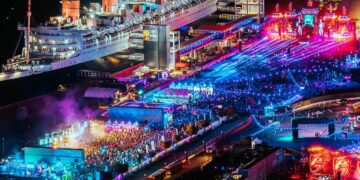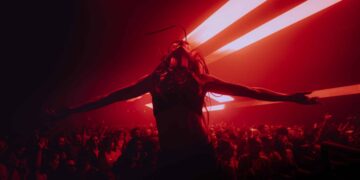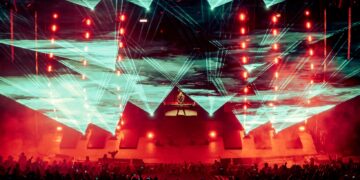Years of design experience and combining different architectural processes resulted in this year’s refined Do LaB stage at Coachella 2024.
“#Deadchella” was a common cry that many of us heard on the Empire Polo Club during Weekend 2 of Coachella. From those in the crowd to online commentators, the world seemed more focused on the attendees (or lack thereof) than the music.
It’s certainly true that, at least for this writer, there was more space to dance compared to previous years. Although 2024 brought an abundant number of new draws — historic band reunions, surprise headliners, a new stage, and an updated Sahara tent — many fans blamed the lineup for Coachella’s low attendance. These murmurs were nonetheless irrelevant at one specific stage, and that was the Do LaB.
The Do LaB’s partnership with Coachella dates back about 20 years. Since its humble origins, the indie producers prioritized building stages that put art and nature at the forefront of the live music experience. Yet it was their punk and DIY ethos that evolved their stage into a home for some of dance music’s most historic performances. Ahead of this year’s event, the Do LaB organizers teased a new, immersive structure, saying they’re “going back to our old roots” after building tent-shaped designs for the past few years.
Tucked away in between the new Quasar stage and the Mojave tent, ten mushroom-like structures looked as if they sprouted from the desert grass. The nine in front of the Do LaB’s mainstage were each erected by four minimalist pillars. The gills, which feature a spectrum of color, danced in the wind as they provided shade for those seeking a respite from Indio’s near-triple-digit day temperatures.
You instantly felt connected to your surroundings as you gazed at the man-made structures. Yet creating something elegant and complex is no easy job, especially when you’re under a time crunch. Jesse Flemming, one of the Do LaB co-founders, told me that he and his team just had six months to debut the new structure.
“This whole thing started kind of late for us. So we [were] designing pieces, sending them off to fabrication, sending them to the engineer, then going [back] to fabrication. And then once some pieces were ready to fabricate, then we’d go back to designing the next pieces.… We built this entire thing in our shop and several other shops in six weeks — which is crazy… so the whole thing came down all the way to the wire, all the way to the very end.”
Jesse Flemming
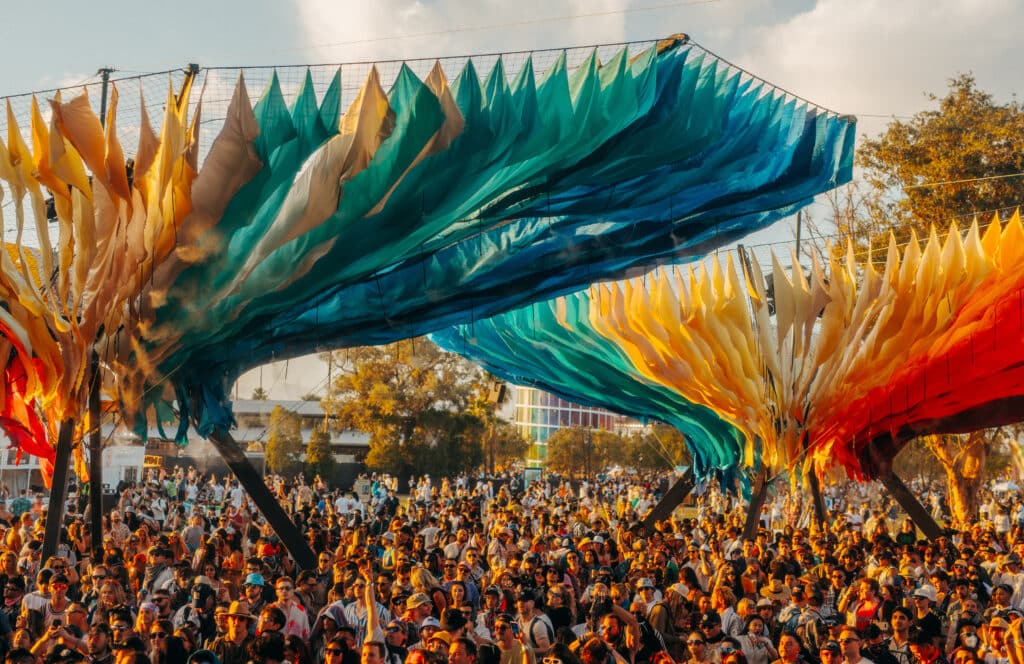
As I walked through this artificial garden, my eyes were enchanted by the 2,500 pieces of fabric that made the gills sparkle. Each piece had a unique label, a different shape, a different length, and a different curve, all of which served its own purpose in composing this prismatic ecosystem. It was quite the trip, which was why this piece is aptly coined the MACROdose. Flemming said that his brother Josh, also a co-founder of the Do LaB, came up with the design after sketching hundreds of different ideas.
“You know, it didn’t look anything like this when he came up with it, but we knew that it was the right direction. And then he slowly started to work through it and, like, figure out all the different elements and pieces and the fabric. And this is kind of how it landed.”
Jesse Flemming
This vision, however, required a lot of complex engineering. To create the stage’s unembellished look, Flemming said that the refined result was only possible by applying what they had learned throughout the years and combining different architectural processes to put the MACROdose together. But, in this writer’s opinion, the accumulation of all this hard work is meant to be experienced at night.
During Cloonee’s surprise b2b midnight set with Chris Lorenzo, I was in the middle of the crowd, watching the fabric gills sway because of a gentle breeze. They looked like they were breathing. Quick flashes from the stage’s screens, the fluttering lights, and the quick lasers were tricking my senses, making me feel as if I were somehow swimming underwater. These structures felt alive.
It’s hard to imagine that what started out as a renegade installation at Coachella turned into a cultural phenomenon. Just like any successful garden, it took time, effort, and patience. Flemming said that as the budget grew throughout the years, the team invested nearly every penny back into the Do LaB to let it grow as well.
“It’s like, forget about the money. We want to give it everything we got and show the world what we can do, so we’re always going to spend all the money on the art because we’re here to put on a show and leave an impression on people. We’re not here to make money, and that’s what we do. We pretty much leave everything we have out here on the fucking dancefloor.”
Jesse Flemming



